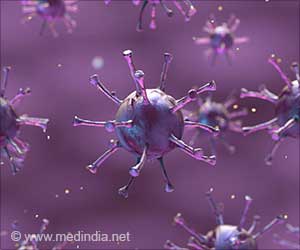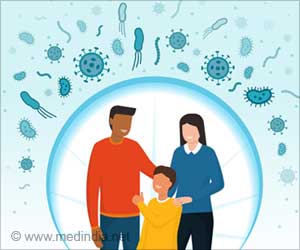Coronavirus (COVID-19) may transmit most easily through extended and unprotected contact with infected people, not brief or casual exposures, says a new study.

‘Person-to-person transmission of SARS-CoV-2 occurred between two people with prolonged, unprotected exposure while the first patient was symptomatic.
’
Read More..




No further transmission was detected, despite monitoring contacts for symptoms and testing all those who developed fever, cough, or shortness of breath, as well as a sample of asymptomatic healthcare professionals who had come into contact with the patients.Read More..
On January 23, 2020, Illinois reported the state's first laboratory-confirmed case (index case) of COVID-19 in a woman in her 60s who returned from Wuhan, China, in mid-January, 2020. Subsequently, the first evidence of secondary transmission in the USA was reported on January 30, when her husband, who had not traveled outside the USA but had frequent, close contact with his wife since her return, tested positive for SARS-CoV-2.
Public health authorities conducted an intensive epidemiologic investigation of the two confirmed cases. This study describes the clinical and laboratory features of both patients and the assessment and monitoring of several hundred individuals with potential exposure to SARS-CoV-2.
In total, 372 individuals were identified as potential contacts--347 of these people were actively monitored after confirmation of exposure to the woman or her husband on or after the day of symptom onset (including 152 community contacts and 195 healthcare professionals). There were 25 people that had insufficient contact information to complete active monitoring. A convenience sample of 32 asymptomatic healthcare personnel contacts was also tested.
These 347 contacts underwent active symptom monitoring for 14 days following their last exposure. Of these, 43 contacts who developed fever, cough, or shortness of breath were isolated and tested for SARS-CoV-2, as well as asymptomatic healthcare professionals. All 75 individuals tested negative for SARS-CoV-2.
Advertisement
Both patients recovered and were discharged to home isolation, which was lifted 33 days after the woman returned from Wuhan, following two negative tests for SARS-CoV-2 taken 24 hours apart.
Advertisement
The authors emphasize that individuals who think they might have been exposed to COVID-19 and experiencing a fever, cough, shortness of breath, or other symptoms consistent with COVID-19 should call their healthcare provider before seeking help so that appropriate preventive actions can be taken.
"Although further detailed reports of contact investigations of COVID-19 cases could improve our understanding of the transmissibility of this novel virus, the absence of COVID-19 among healthcare professionals supports US Centers for Disease Control and Prevention (CDC) recommendations around appropriate infection control", explains co-lead author Dr. Isaac Ghinai from the Illinois Department of Public Health, USA.
Co-lead author, Dr. Tristan McPherson from the Chicago Department of Public Health, USA adds: "Without using appropriate facemasks or other personal protective equipment, individuals living in the same household as, or providing care in a non-healthcare setting for, a person with symptomatic COVID-19 are likely to be at high risk of infection. Current CDC recommendations for individuals with high-risk exposures to remain quarantined with no public activities might be effective in reducing onward person-to-person transmission of SARS-CoV-2."
The researchers acknowledge that these data are preliminary and note several limitations, including that the report describes only one known transmission event. Therefore the findings may not be generalizable or representative of broader transmission patterns. They also point out that this investigation might not have identified all individuals with potential exposure to COVID-19 as it was dependent on the couples' recall of the places they visited, the people they met, and the time of symptom onset. Finally, the investigation into these cases took place prior to updated CDC guidance on classifying exposure risk among contacts of patients with COVID-19. For example, updated guidance suggests that a sore throat should be included as a possible symptom of COVID-19 when evaluating healthcare workers, and indicates that a single PCR test, as used in all the contact tracing in this study, might not be sufficient to definitively rule out infection over a 14-day incubation period, and as a result, some cases of COVID-19 might not have been detected.
Source-Eurekalert















